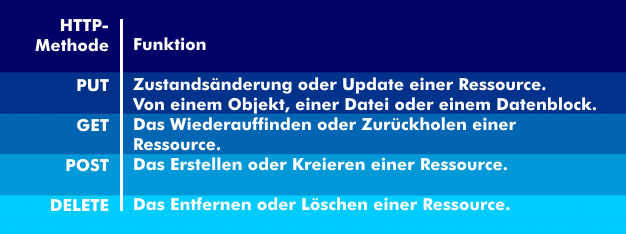representational state transfer (REST)
Representational State Transfer (REST) is an architectural model that can be used to describe web services using HTTP commands. REST uses principles that are used in large, distributed applications such as the World Wide Web(WWW). It is an interaction model based on the HTTP protocol where web servers support web clients. REST works with the HTTP commands GET, PUT, POST, and DELETE to describe, modify, and delete resources.
The REST architectural model describes how the World Wide Web (WWW) works and serves as a reference for future extensions and as a guide on how to use web standards in a web-friendly way.
In REST, each individual object or file is considered a resource that can be addressed using the Uniform Resource Identifier( URI). PUT can be used to create new resources and change and update their state. GET is used to query the representation of a resource and to retrieve resources. POST is used to change resources or add something to the resource. And DELETE is used to remove and delete resources.
REST abstracts the architecture elements in a distributed hypermedia system, but it does not focus on details of how individual components are implemented or in what syntax the protocols are written, instead it deals with the role and function of the components. Their relationships and interactions with each other are determined by their Internet address( URL).
REST shows the fundamental relationship of the components and data that form the basis of the Web architecture and their behavior in network-based applications.

